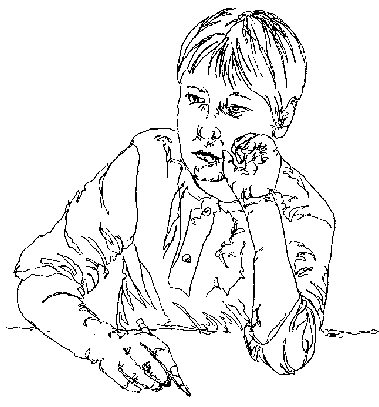Intrinsic value refers to the interest and enjoyment that students experience when engaging in an activity. When students enjoy scholastic tasks, they are intrinsically motivated to do well. Both interests and personal relevance produce intrinsic value for a student. Generally, students are intrinsically motivated to pursue activities that are moderately novel, enjoyable, exciting, and optimally challenging. When schoolwork is too easy, students become bored. When tasks are too difficult, students become frustrated and anxious (Deci & Ryan,1985). Teachers should create classroom environments that provide students with opportunities to engage in interesting, personally relevant, challenging activities. Students bring a variety of experiences and interests to the classroom, and learning becomes personally meaningful when students’ prior knowledge and diverse experiences are connected with their present learning experiences.
Educators can also increase the intrinsic value of their classes by creating an enriching environment and providing opportunities for students to explore their interests. In a recent study, researchers used self-selected enrichment projects based on students’ interests as a systematic intervention for underachieving gifted students. This approach specifically targeted student strengths and interests and helped reverse academic underachievement in over half of the sample (Baum, Renzulli, & Hebert, 1995).
 To increase the intrinsic value in your class, plan learning activities that capture your students’ attention and spark their curiosity, creativity, and enthusiasm. The following list contains general strategies for increasing the intrinsic value of classroom tasks and activities.
To increase the intrinsic value in your class, plan learning activities that capture your students’ attention and spark their curiosity, creativity, and enthusiasm. The following list contains general strategies for increasing the intrinsic value of classroom tasks and activities.
Imagine…
Dan is an eighth grader who moved to the school district in the beginning of seventh grade. Since then, his grades have been fairly low. He receives B’s, C’s , and D’s in most subject areas, and he is failing Algebra. Dan is a wonderful artist who excels at any assignment that allows him to utilize his artistic talent. Dan is very disorganized. Dan is a quiet, almost withdrawn adolescent who possesses a childish charm. His teachers and his mother speak regularly to discuss his schoolwork; however, it seems to have no impact on his achievement. How could you help Dan to develop an interest in his math or language arts class?

Strategies to Increase the Intrinsic Value of Tasks in Your Class
Using the following strategies could help Dan to develop an interest in his language arts class.
- Set the stage.
- Give Choices.
- Provide Challenge.
- Use PRETESTING/PRESASSESSMENT.
- Promote active learning.
- Provide immediate feedback.
- Make it a game!
- Assume students are eager to learn.
- Variety is the spice of life!
- Teach big ideas.
- Be enthusiastic.
Start out with a BANG! Start units with interest grabbing puzzles, mysteries, teasers, paradoxes, or demonstrations to immediately pull students into the upcoming material. These activities should connect to the learning outcomes.
Whenever possible, offer your students authentic choices about the ways in which they learn and show mastery of the material in your class. If you have trouble developing a menu of choices, you can ask your students for ideas about alternative projects or products. (Sometimes giving choices may not be appropriate—sometimes students really DO need to all do the same thing at the same time… However, building in choices when possible and appropriate increases students’ intrinsic motivation.)
Students are more likely to become engaged with material that is optimally challenging. Classroom activities should be appropriate to their current knowledge and skill levels. Material that is either too hard or too easy is anti-motivational. Ideally, teachers should deliver instruction that is just above the skill range of the students. The activity should be something that the students can master, but not without effort and appropriate strategy use (Morrone & Schutz, 2000). Ensure that your students are challenged (but not frustrated) by classroom activities.
Pretest your students to find out what they already know about the material and skills that you are about to cover in your class and to ensure that they have the prerequisite skills and knowledge to be successful in the upcoming unit. An ideal pretest will include questions that all students should have mastered
as well as questions that, if answered correctly, indicate mastery of upcoming instructional objectives. Use students’ pretest results to provide instruction that is optimally matched to their level of mastery. If students have already mastered an instructional objective, allow them time to pursue interest based enrichment opportunities, rather than giving them “more of the same.”
Most students tend to prefer activities that allow active participation or response. Activities that allow students to interact with you or one another, or allow them to manipulate materials are usually more intrinsically motivating to students. Research shows that students prefer active learning to passive forms of learning.
Students also tend to enjoy activities that allow for immediate feedback. This immediacy of feedback is one reason that computer games are so popular. Immediate feedback enhances the psychological impact of the activity. When possible, build opportunities for immediate feedback into classroom activities.
Incorporate game-like features or elements of fantasy into classroom activities (Brophy, 1998). With a bit of imagination, ordinary seatwork assignments can be turned into “test yourself” challenges. Embellish activities in ways that encourage students to playfully engage in the learning activities. Embellish
activities with challenges, fiction and/or fantasy, obstacles to overcome, hidden information, etc. However, you should ensure that the learning activities do not detract from the intended objectives. Distinguish between fun activities that involve actual learning and simply having fun.
Treat your students as if they are already eager learners. “To the extent that you treat your students as if They already are eager learners, they will be more likely to become eager learners” (Brody, 1998, p. 170). When introducing a new concept or activity, tell students how that activity will be enjoyable or interesting. For example, when introducing a more complex topic, refer to it as more “interesting” and more “intriguing,” rather than as more difficult. When you are starting a unit that you are afraid your students will NOT like, do NOT say things like “You d this exercise a little tedious,” “I thought this book was a little boring myself,” “you may not like this,” etc. Be enthusiastic about your subject area and the lessons that you teach.
Everyone enjoys jobs that contain a variety of activities and provide them with opportunities to use a variety of skills. Try to avoid overly repetitious activities. Try to use different types of learning activities throughout the course of the semester.
Use “minds-on” activities to engage students. Zahorick suggests that minds on activities get students in touch with powerful ideas that anchor content structures, reflect major instructional goals, and provide the basis for authentic applications.
Identify good reasons for viewing a topic as interesting, intriguing, meaningful or important (also utility value) then communicate those reasons to your students as you teach. This doesn’t mean that you need to be a three-ring circus. “The primary objective of projecting enthusiasm is to induce students to value the topic or activity, not to amuse, entertain, or excite them” (Brody, 1998, p. 173).